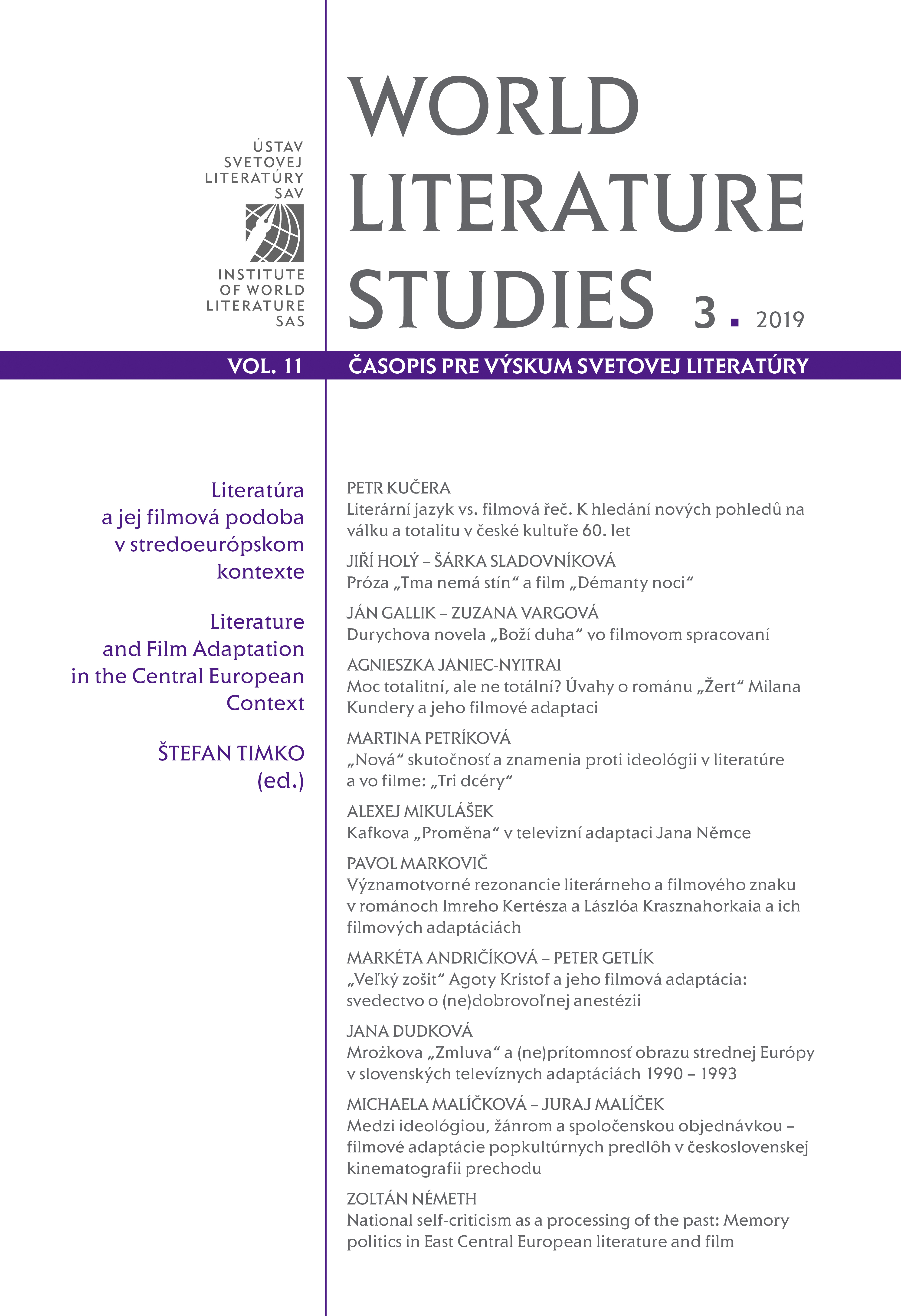Významotvorné rezonancie literárneho a filmového znaku v románoch Imreho Kertésza a Lászlóa Krasznahorkaia a ich filmových adaptáciách
The significant resonances between the literary and cinematographic sign in the novels of Imre Kertész and László Krasznahorkai and their film adaptations
Author(s): Pavol MarkovičSubject(s): Language and Literature Studies, Studies of Literature, Comparative Study of Literature, Hungarian Literature, Film / Cinema / Cinematography
Published by: SAV - Slovenská akadémia vied - Ústav svetovej literatúry
Keywords: "Semiotics"; "Transposition"; "Hungarian Novel"; "Cinematic adaptation"; "Imre Kertész"; "László Krasznahorkai";
Summary/Abstract: In comparing the literary sign and its cinematic adaptation, it is appropriate to apply the term resonance and reciprocal relationship, particularly when the individual artefacts (both literary and film) become a mutually illuminating metasign and interpretative key, standing not only in a genetic, but also in a complementary and dialogical relationship. In the context of Imre Kertész’ s novel Fatelessness (Sorstalanság, 1975) it is important to consider not only the narrative perspective in the text and the film (Sorstalanság, 2005, directed by Lajos Koltai), but also its outcome in the paradox of the possibility of the existence of happiness and other anthropological categories in the conditions of humanity after the Holocaust. Thus, the main subject of reflection is the relation between the narrative and expressive strategy and the anthropological category. Another subject of reflection is the aesthetic overlap of this relationship. László Krasznahorkai’ s novel Satan’ s tango (Sátántángo, 1985) has a typologically different narrator and its film adaptation (Sátántángo, 1994, directed by Béla Tarr) has a more pronounced tendency to autonomy and artificiality. Interpretative impulses exist not only between the literary text and its film adaptation, but also in different texts, associated with a certain semantic category and figures of the semiotic systems. The study analyses the relationships of these artefacts, indicated by an interpretative matrix, in which the presentation of the everyday presence of the apocalypse (Kertész and Koltai) is confronted with the apocalypse of everyday life (Krasznahorkai and Tarr).
Journal: World Literature Studies
- Issue Year: 11/2019
- Issue No: 3
- Page Range: 80-88
- Page Count: 9
- Language: Slovak

